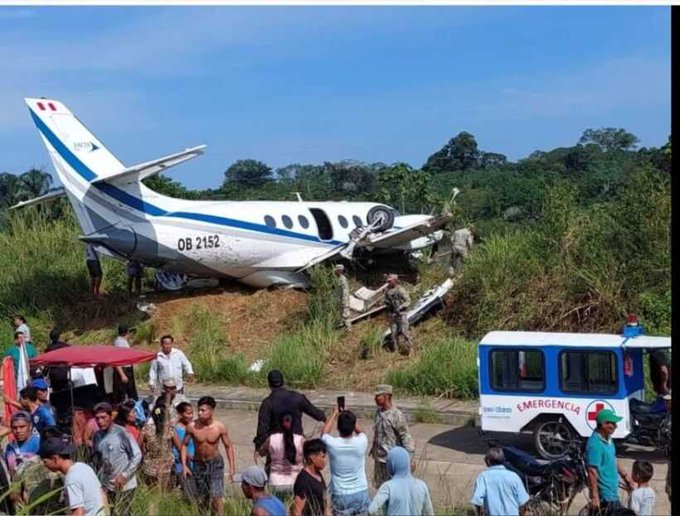
Last week, a Southwest Airlines jetliner, slid past the end of a snowy runway on landing in Colorado Springs. There were no injuries to those on board or damage to the aircraft. According to airline spokesman, Chris Mainz, Flight 1954 from Las Vegas never left the paved surface. The Boeing 737 Max came to a halt about 20 feet into an overrun area.
This otherwise “meh” event could be a Christmas miracle, considering how often similar events have serious consequences, even for Southwest. The most famous, if not the most deadly, happened on December 8, 2005, eighteen years to the day that last week’s Colorado travelers walked away unharmed from Flight 1954.
In the 2005 event, a Southwest 737 failed to stop in time after landing on a snowy runway at Chicago’s Midway Airport. The plane tore through a perimeter fence and onto the street beyond. It came to a halt on top of a car carrying the Woods family.

Photo taken and used with permission by Gabriel Widyna
The five, parents Leroy and Lisa and their three sons had stopped at McDonalds for a snack then got back in the car and set out for grandmother’s house. Christmas music was playing on the radio. Mom and dad were in the front seat. The boys, aged 1 to 8, were in the back. Jacob, who goes by Jake, described the scene for me when I spoke with him on the phone for an article I wrote for Macleans in 2021.
“Dad couldn’t open the door so he crawled out the window and pulled me out,” Jake said. Then his dad retrieved one-year old Matthew, but Joshua, aged six was out of his reach. Jake remembers his father “yelling at the pilot, to get the plane off his kid.” It was to no avail.
“Runway excursions,” as they are known, occur more often than most travelers imagine. The International Air Transport Association reports they are the most common type of air accident.

In September 2022, one person was killed and five others seriously injured in Peru when a BAe Jetstream overran the runway on takeoff. (This was the unusual excursion in that it occurred on takeoff. More happen on landing.)
In February 2020, a Pegasus Airlines 737 skidded off the runway in Istanbul, breaking apart. Three people were killed and 179 injured. Six months later, an Air India Express flight was unable to stop in time and the plane nosed down a 30-foot embankment in Calcutta, killing 21 people, including both pilots. The International Civil Aviation Organization noted airplanes veered off the runway nearly once a week in the period between 2008 and 2016. Contaminated runways are a major contributor and one that pilots are likely to encounter again this year as the northern hemisphere enters winter.
The death of Joshua Woods had a profound effect on Southwest pilot John Gadzinski. For years he has been documenting the interaction between runway surface conditions and airplane braking action. And trust me, it is not a simple relationship as Gadzinski explains in this new and fascinating report for the Society of Aircraft Performance and Operations Engineers.
But understanding the myriad contributing factors that interfere with braking on landing was an essential first step to reducing runway excursions. Just as complex was what followed, creating a process to standardize how pilots assess and share information about their landing experience and creating an engineering standard so that the aircraft could share how slippery the runway is. Together these would allow an objective description of conditions to be passed from one flight crew to the next.

Gadzinski and others became convinced that what one pilot described to me as subjective seat-of-the-pants knowledge (he called it “keister” experience) actually can be objective.
The result of their work is advisory circulars issued by Canadian and American aviation agencies that say, and I paraphrase here, “Hey airlines and airline pilots, with training you can reduce runway excursions. You don’t have to do it, but maybe you should.”
Only people familiar with the snail’s pace of government action would be enthusiastic about such incremental progress. And to that point, Gadzinski, who flew for Southwest at the time Joshua was killed and still flies for the airline today, balances his pleasure at getting the North Americans to endorse the idea of standardizing pilot landing reports with frustration that airlines are not obligated to do it.
“I am the person leading and working with Airbus and Boeing and this, this worldwide effort to create the standards,” he told me. “We need to train the pilots about the systems. We need to understand how to use these systems and try and get these systems certified for use in our airline. There’s a lot of things that we could do.”
The thing the industry shouldn’t do is rely on luck, regardless of how well it turned out for the air travelers leaving Las Vegas. Next time there may not be a happy ending.

Author of The New York Times bestseller, The Crash Detectives, I am also a journalist, public speaker and broadcaster specializing in aviation and travel.









BRAP= braking action poor… always gets my attention.
Thank you again for your well researched reports.